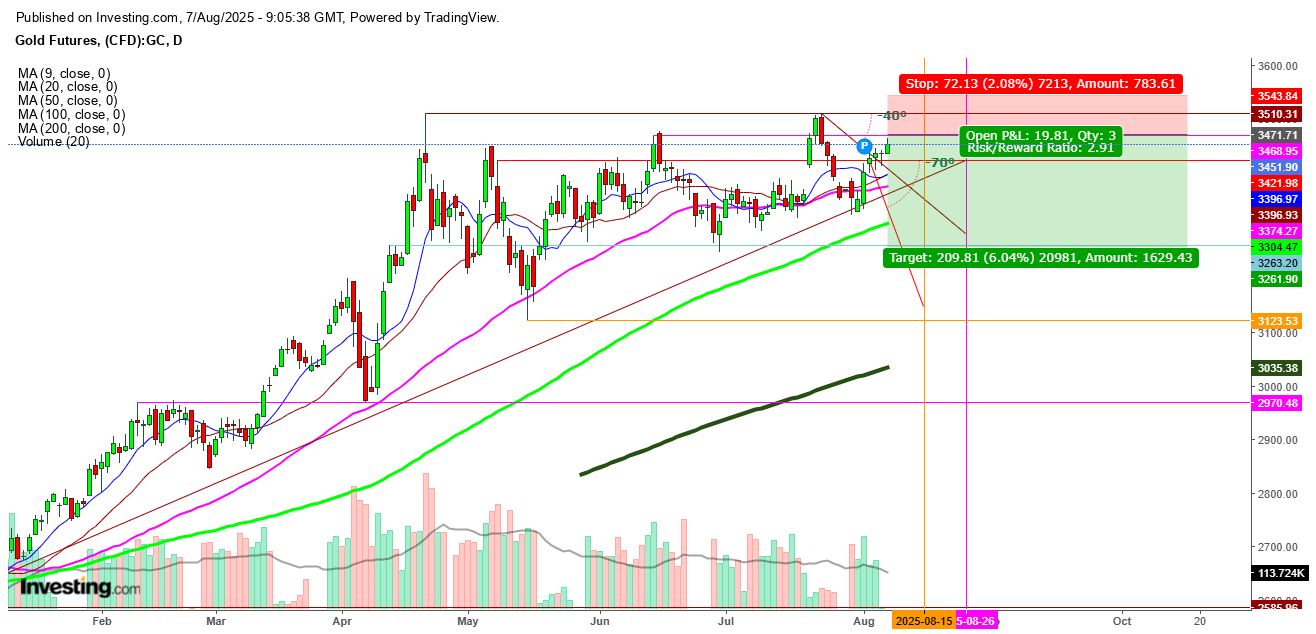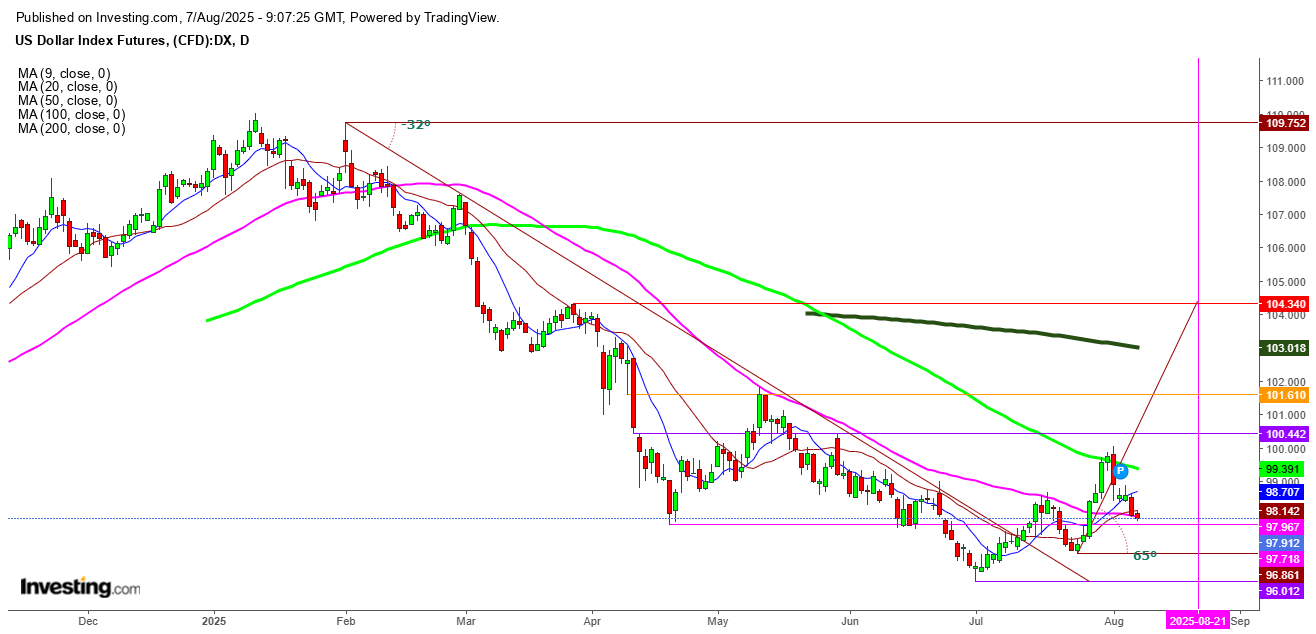China promoted domestic AI chips before Nvidia move - FT
After reviewing the movements of the gold futures in a daily chart, amid changing scenario on Trump’s tariff stance that could have denting impact on the global economy, I anticipate that a sudden surge in haven demand seems to be temporary as the gold futures have again entered in the bearish zone as the overly enthusiastic gold bulls to test the recently tested high of July 23, 2025 again.

Undoubtedly, gold futures are trading with 1% gain on Thursday, raising doubts about the sustainability of this bullish move that that pushed the futures inside the bears’ territory from where they could start loading fresh shorts with a stop loss at $3543 for a target at $3262 as this surge in safe-haven demand after fresh tariff threats from U.S. President Donald Trump and bets on a Federal Reserve interest rate cut after the announcement of weak U.S. economic data.
Moreover, Trump’s stance on imposing a 100% tariff on imported semiconductors from certain countries unless they invest in American chip manufacturing could spark concerns over further disruptions to global supply chains and higher inflation, which has extended bearish pressure on the U.S. dollar.
I anticipate that this bumpy move looks evident enough to attract big bears to load fresh shorts as the gold futures are currently trading at a pivotal point from where the bears come on top, and despite this bump amid low trading volumes indicate the reluctance of the bulls to continue to move higher as the gold futures have come down from the day’s high at $3662 to $3654.
As I have already explained in previous analyses, the gold has already lost its safe haven potential at such higher prices as it’s a non-yield asset, and it would be difficult to hold it if the Fed doesn’t come with a further rate cut in its next meeting.
On the other hand, U.S. dollar index futures are currently trying to hold an important support at the 50 DMA at 97.96, which could take a sharp reversal as U.S. President Donald Trump would prefer to soften his policies on the tariff front if he finds them against the dollar’s strength.
Secondly, some of his trading partners could take retaliatory measures as Trump’s exacerbated tariff rates could push them towards adopting de-dollarization by accepting local currencies to trade with other partners to avoid the U.S. due to higher tariffs on their products.
Such de-dollarization attempts have already been adopted by Saudi Arabia, China, and some Middle Eastern countries, and this phenomenon could extend even more if Trump remains with his hardline stances over trade tariff rates.
I anticipate that the advent of the petroyuan by China to trade with Saudi Arabia and some other Middle East countries is an attempt to avoid the petrodollar for purchasing oil, while facilitating these trading partners to use the petroyuan to get an excess for buying gold through Chinese commodity exchanges.
Finally, I conclude that some other Asian countries like India could adopt the same strategy to avoid the denting impact of a 50% tariff, imposed by the U.S. President last midnight.
Shortly, we could find the advent of a fresh selling spree in gold futures as the denting impact of this trade tariff war could have a more denting impact on the U.S. economy.
Disclaimer: Readers are advised to take any position in gold at their own risk, as this analysis is based only on observations.
